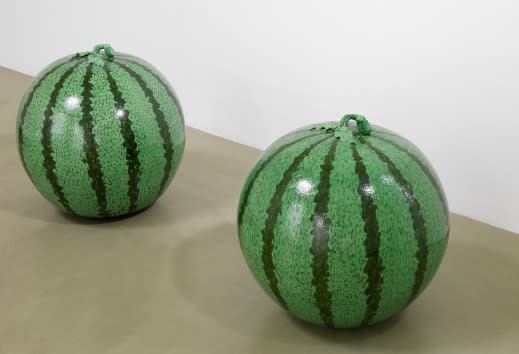Ai Weiwei b. 1957
Please contact the gallery for other works available by this artist.
Ai Weiwei is a Chinese artist known for his political activism through artwork that challenges the Chinese government's control over "acceptable" art. Under Mao Zedong's rule, Ai Weiwei's family was exiled to a labor camp in Shihezi, Xinjiang in 1961 for sixteen years under the Anti-Rightist Movement. When the Cultural Revolution ended upon Mao's death in 1976, his family moved back to Beijing. Ai Weiwei went on to study at the Beijing Film Academy and then moved to New York City in 1981, where he studied at the Parson School of Design and the Arts Student League of New York. Following the completion of his studies, he worked a few odd jobs while further exploring the city, carrying a camera with him everywhere to capture images. During his time in New York, Ai Weiwei was exposed to artists as Marcel Duchamp, Andy Warhol and Jasper Johns, who cultivated his interest in altered readymade objects.
In 1993, he returned to Beijing and exposed fellow young artists to the artistic freedom of American artists. He set up an artist community called Beijing East Village and co-wrote three books about this new generation of artists. Ai Weiwei quickly gained international attention, and in 2008, he was commissioned as the artistic consultant for the Beijing National Stadium, which held the 2008 Summer Olympics. He later brought light to the Chinese government's shortcomings, including the Sichuan Earthquake in 2008, which caused countless casualties that could have been prevented. When Ai Weiwei tried to investigate the situation, he was beaten by the police and suffered internal bleeding that resulted in a brain surgery procedure in Munich, Germany. In 2012, Ai Weiwei was the subject of the documentary Never Sorry, outlining the Chinese government's strict censorship and unresponsive legal system. In response, the artist was beaten and arrested for 81 days with no legal charges issued, in addition to bulldozing his new studio in Shanghai and confiscating his passport.
Ai Weiwei rebuilt his studio and continues his work in Beijing. The artist has stated: "widespread state control over art and culture has left no room for freedom of expression in the country. For more than 60 years, anyone with a dissenting opinion has been suppressed. Chinese art is merely a product: it avoids any meaningful engagement... We see the tendency in the world to criticize democracy and sometimes even to say that authoritarian countries like China are more efficient. That is very shortsighted. China looks efficient only because it can sacrifice most people's rights...I call on people to be 'obsessed citizens,' forever questioning and asking for accountability. That's the only chance we have today of a healthy and happy life."
Ai Weiwei has work featured in the permanent collections of the Musée national d'art moderne in Paris, the Museum für Asiatische Kunst in Berlin, the Museum DKM in Duisburg, Germany, the MCA in Los Angeles, the Solomon R. Guggenheim Museum in New York, the Museum of Arts and Design in New York, the MoMA in New York, the San Francisco MoMA, the Tate Modern in London, the Saatchi Collection in London, the Ullens Center for Contemporary Art in Beijing, the Hara Museum of Contemporary Art in Tokyo, the LACMA, the Museum für Moderne Kunst in Frankfurt and the Queensland Art Gallery/Gallery of Modern Art in Brisbane, Australia.
Related Categories: '85 New Wave, Contemporary Chinese Art, Surveillance, China, Cross-Cultural Dialogue, Political, Large-Scale Sculpture, Collective History, Cultural Commentary, Contemporary Participation.


